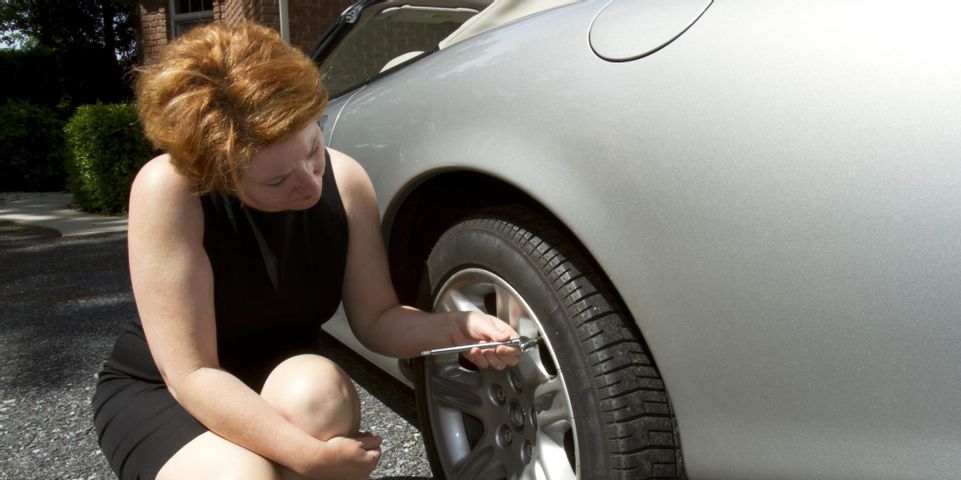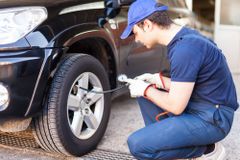
Checking tire pressure ranks high on any DIY auto maintenance task checklist. Tires without enough pressure make too much contact with the road and wear the rubber out. However, overly-inflated tires make too little road contact and can blow out from increased stress. Here, review tips for checking the pressure in your new tires to enjoy a safer, more functional vehicle.
How to Check Your Tire Pressure
1. Recommended PSI
Check your owner’s manual to inflate the tires as per the model’s psi (pounds per square inch), or the amount of air pressure forced on one square inch in the tire. You can also find the psi on a sticker inside the driver’s side door jamb. Most tires have a psi of about 32, but it varies by manufacturer and model.
2. Check Pressure
 Use an inexpensive tire pressure gauge to check psi in the morning when the rubber is “cold,” or hasn’t been used for at least three hours. Never check the pressure immediately after driving. Pressure increases from heat generated by rubber contact with the road, causing incorrect readings. Park your vehicle out of direct sunlight to further avoid misreading issues that can cause you to overinflate your new tires.
Use an inexpensive tire pressure gauge to check psi in the morning when the rubber is “cold,” or hasn’t been used for at least three hours. Never check the pressure immediately after driving. Pressure increases from heat generated by rubber contact with the road, causing incorrect readings. Park your vehicle out of direct sunlight to further avoid misreading issues that can cause you to overinflate your new tires.
3. Remove Caps & Affix Gauge
Unscrew the end cap on each tire’s air valve and place the gauge tool over the valve in light of manufacturer directions. Press the head of the tool down into the valve for an accurate reading. Take several readings per tire and write them down as you go in order to prevent confusion. Keep in mind that electronic gauges provide more accurate readings over standard versions and are easier to read because there are no small notches to decipher.
4. Compare & Adjust
Reset the gauge to take additional readings if you hear a ‘whooshing’ sound of air escaping your new tires. Review the psi readings to make corrections if they are too high or low for your model’s recommended pressure. If there’s too little pressure, add more air. However, if there’s too much pressure, allow air to escape the tire(s) before retaking psi readings. Repeat the process as needed to inflate your tires properly.
Whether you need assistance filling your new tires, or require a rotation or replacement services, count on Quick Lane at Jack Kain Ford. This tire and auto center has served Central Kentucky since 2003, and manager James Holt is always on-premise to answer questions. Call them today at (859) 873-1216 or visit the dealership online for tire details. Get the latest updates on Facebook.
About the Business
Have a question? Ask the experts!
Send your question

